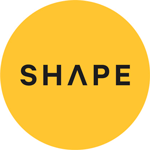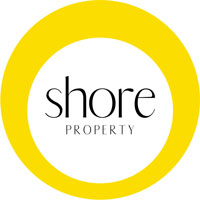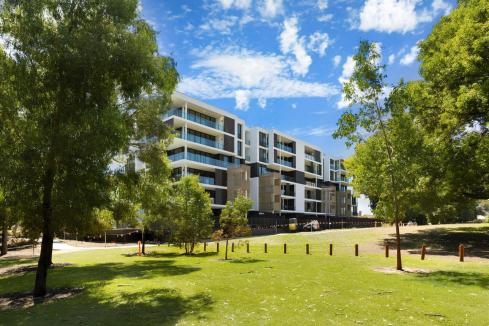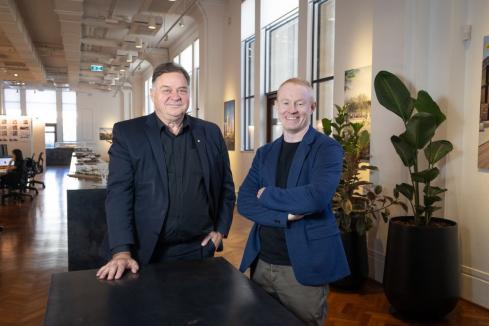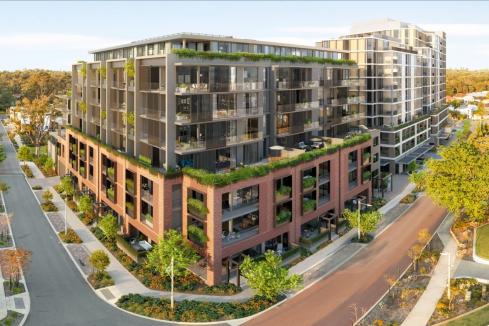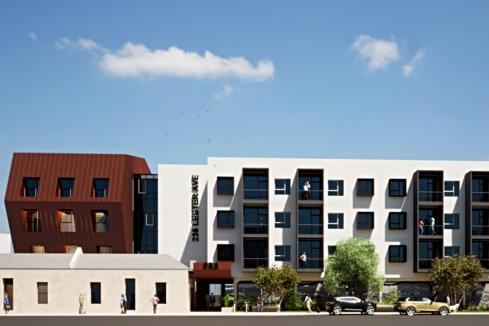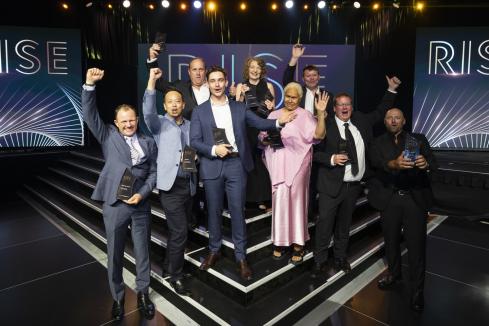Technology is elevating the architectural experience.

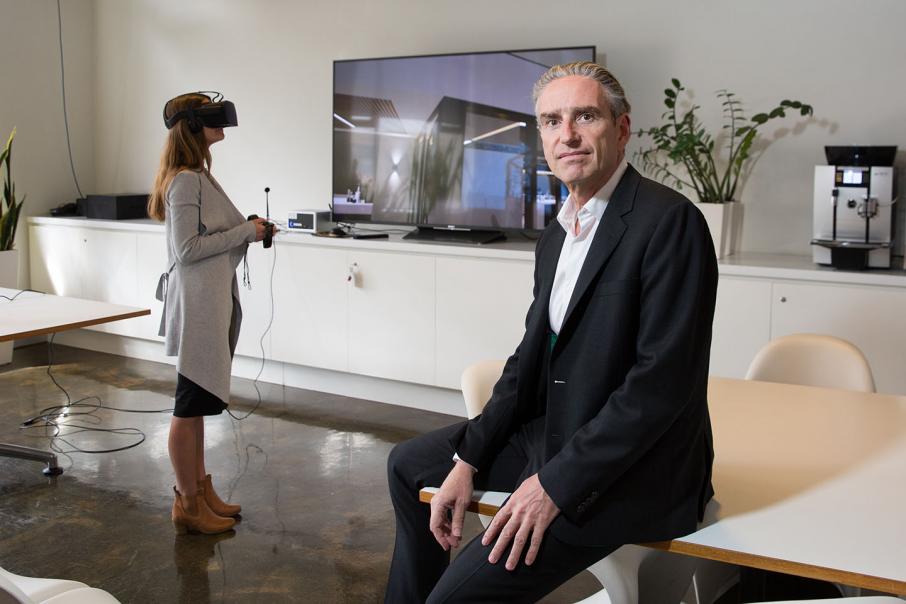
The real estate sector may have incorporated the use of virtual reality and 3D imaging only recently, but some Perth-based architects and developers are already integrating the technology across all stages of their property projects.
Blank Canvas Studios has been developing capabilities in architectural visualisation through 3D imagery and animation since 2017, through studios in Perth and Sydney.
The group’s portfolio includes work for residential and commercial developers such as Blackburne, Mirvac, Finbar and Vicinity Centres, with the use of 3D visualisation helping create more photorealistic building renderings.
(view a PDF version of this special report)
Last month, ASX-listed Vection Technologies, which has offices in both Australia and Europe, acquired Blank Canvas with a plan to leverage its 3D rendering and visualisation within its existing VR and augmented reality (AR) services.
Blank Canvas managing director Paul Clayton said combining 3D photorealistic imaging with real-time VR and AR technologies created multiple applications for the design sector.
“If you’re an architect, imagine being able to see a building brought to life in photorealistic detail in real time, while you’re actually designing it,” Mr Clayton told Business News.
“Or bringing in a placemaking consultant to design shared spaces and environments collaboratively in real time.
“This instant visual ‘feedback’ not only creates incredible time and cost efficiencies, it allows for more experimentation.”
That experimentation, he said, could ultimately lead to an improvement in design quality and even better urban and city planning.
“The more realism we can build into the visualisation of design, the more informed buyers can be before they invest in their new apartment residence or custom home,” Mr Clayton said.
“It’s also about holding the industry to account; if what’s delivered in the end doesn’t meet or exceed what we’re able to visualise, buyers quite rightly have some recourse.
“More importantly, the market feedback you get from buyers when they see beautiful renders or animations for an elegantly designed building helps architects and developers better understand what’s going to resonate with the market.”
According to realestate.com.au’s 2020 Developer Insights Series Research, nearly half of all apartment buyers last calendar year purchased an apartment without visiting a physical display suite, up from 27 per cent in 2019.
Mr Clayton said the benefits of increasing the integration of technology also extended to supporting a more agile community feedback process.
“Imagine being able to engage the community in a collaborative design process to overcome concerns around density, height and shadows and other potentially controversial issues in days and weeks, instead of months,” he said.
Applications
Perth-based Space Collective Architects design director Felipe Soto said COVID-19 had accelerated the use of VR technology within the industry, particularly in marketing properties to overseas investors.
Mr Soto said the technology had also been used during construction to show a structure’s progress, with one client installing cameras on site, enabling a real-time overlap view of the physical structure and the architecture model.
During the past decade, Space Collective director Tom Letherbarrow said, architects had started to transition away from 2D drawings and physical models, traditionally staples for architects in developing and presenting projects.
“Now we’re working in 3D; that’s schematic design but also now in the actual working drawing stage of buildings,” Mr Letherbarrow told Business News.
“The actual documentation is now done in 3D, forming an incredibly detailed model.
“The next stage is creating that virtual world.”
Mr Letherbarrow said the technology was still in its early stages of use in Perth, but industry had become more receptive in understanding its potential, for buyers, architects and architecture students.
“We can get a better feel for the buildings we’re designing, a real appreciation of materiality, the light at different times of the day… all of this can be virtually displayed,” he said.
“It also helps technically to see where there may be clashes between structure and surfaces; you can look at that in real time, so you can walk around your building and realise that corner isn’t right, which may not be picked up from a 2D drawing.
“And even with a 3D model, you might miss that, but it’s hard to miss when you’re walking around a virtual model of the building, looking at every single corner.”
Cameron Chisholm Nicol is another local design practice that’s been a leader in this space, investing in VR capabilities several years ago.
CCN managing director Dominic Snellgrove said one of the biggest benefits had been the technology’s ability to convey complex ideas.
CCN recently implemented a displacement air system concept within DFD Rhodes’ new five-storey office building on Ord Street in West Perth.
Currently under construction, the 3,000 square metre office will feature air supply diffusers located near floor level, rather than a conventional overhead air conditioning system, which essentially mixes old air with new.
Mr Snellgrove said by using a displacement system, diffusers pushed air vertically to then be extracted through the ceiling, offering an improvement in air quality of between 40 and 100 per cent.
The concept had been used throughout Europe for decades, he said, but there had been little success convincing Perth clients to embrace the innovation.
“The ability to walk the clients around the building was instrumental in getting approval,” Mr Snellgrove told Business News.
“In the past it may take a significant amount of material, drawings and evidence to communicate how a building would look and feel; the ability to put on a headset and walk through the project shortcuts a lot of challenges we have in communicating our projects.”
Mr Snellgrove said CCN had been using a combination of Revit (building modelling software) and Enscape (real-time rendering and VR), particularly in the building documentation phase.
The technology enabled his team to walk around buildings (like a video game) either through 3D VR goggles or via a desktop monitor.
“We’ve been using that for a long time but I’m noticing more offices now finding it more accessible and usable,” Mr Snellgrove said.
“On the horizon is something we call generative design, computer-based design programs that can automatically generate design.”
That involved plugging in site parameters, with the software then generating a design response based on any restraints associated with that site.
“The complexity of the thought process that goes into understanding briefs, site conditions, statutory planning, the economic models associated with highest and best use … the amount of variation is just so enormous, requiring such creativity from the management of so many different inputs, that I think it’ll be some time before an algorithm can adequately address those issues,” Mr Snellgrove said.
And when it came to imitating the original and aesthetic thoughts of an architect, Mr Snellgrove said it was a possibility, but hopefully a way off.
“A brain is only a collection of neural connections,” he said.
“And once technologies can replace and replicate the scale and complexity of those neural connections, then they’ll have a brain.”








